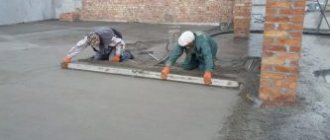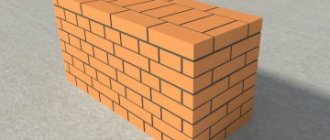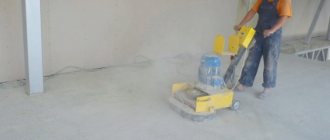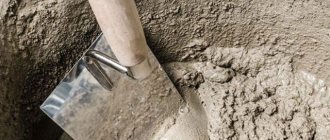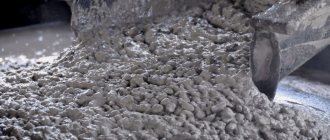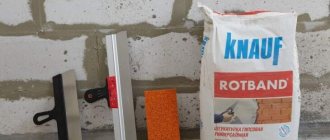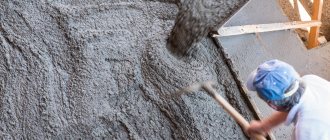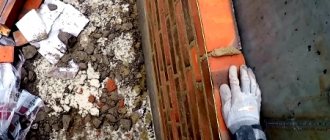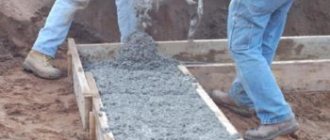Cement mortar M100 is a building material that is produced in strict accordance with GOST 28013-98 from binders and fine-grained aggregates. You can make the mixture for the solution yourself or buy a ready-made one, the proportions of which were mixed on precise factory equipment. Cement is diluted with water before starting work. The most convenient and reliable way is to buy a ready-made plastic mixture with delivery to the site using a concrete mixer. The cost of the dry mixture is calculated by weight, the plastic mass by volume.
Compound
The solution contains the following ingredients:
- Astringents
. Used in cement mortars of grades M300-M500. Portland cement is most often used in construction. Mixtures that will be used at higher humidity contain lime along with cement. In addition to the fact that it increases the performance characteristics of the composition, it spreads well and fills any cracks and depressions in the base. If the purpose of the mixture is decorative, dyes can be used. - Fine aggregate
. Sand is selected depending on what the cement is needed for. Very fine sand is used in plaster, and coarse sand is used for masonry mortar. For tile adhesive, mountain or quarry sand is usually used, which is completely free of clay. River and sea sands have rounded grains, which reduces the quality of adhesion to the surface compared to angular sand. For decorative solutions, washed quartz sand, granite and marble chips, crushed ceramics and polymers are used. - Plasticizers and more
. They are used to give the solution plasticity and other necessary characteristics. A plasticizer is required in solutions that will fill the seams of concrete blocks and slabs. If the solution will be used at high humidity, water-repellent substances are introduced into it. - Natural and artificial dyes
. They are added to the solution if you need to give it a certain shade. Most often used in compounds that fill joints. - Water.
Fresh, ordinary tap water is suitable.
Cement mortar M100
Mortar brand M100, produced on the basis of certified cement and washed sand, belongs to the category of masonry and leveling mixtures with excellent strength characteristics and water resistance. The material has good ductility and ease of application. Cement mortar M100 is widely in demand in the construction of residential and industrial buildings, their repair and reconstruction.
Material cost and delivery terms
| Product class | Product brand | Selling price per 1 m3 including VAT |
| B-7.5 | M-100 | 2600 rub. |
The volume of one-time delivery is 4–8 m3 of cement mortar. Delivery from 1 m3 is possible, subject to payment for transportation of 4 m3 of material.
Material composition
Cement M300 or M400 is used as a binder in the solution. Washed fine sand (up to 0.3 mm) is used as a filler. The binder is warm, clean water, as well as various additives, plasticizers and fillers. To perform plastering work, a small volume of carefully crushed lime is added to grade 100 cement mortar. Ingredients are additionally added to masonry compositions to increase the waterproofing properties of the material and its hardening time.
Current standards
According to the current GOST 28013-98, when carrying out general construction and finishing work, only a factory-produced mixture can be used. Cement mortar grade 100, produced using modern equipment, is subject to regular monitoring at all stages of production. The required temperature and humidity conditions must be maintained, exact proportions are observed and the quality of the raw materials is strictly checked.
| compressive strength grade | time of use | operating temperature range | thickness of one layer | adhesion strength coefficient | aggregate size (maximum) |
| 100 | up to 60 minutes | from 0 °C to +30 °C | from 10 mm to 50 mm | from 0.5 MPa. | 0.3 mm |
Mixture characteristics
The technical properties of M100 cement mortar, in particular its strength and plasticity, depend on the quality of the sand: structure density, roughness and grain size. The high-quality mixture supplied by BetonTransStroy has the following characteristics:
- Compressive strength grade – 100 MPa;
- use time – up to 60 minutes;
- operating temperature range – 0…+30 °С;
- thickness of one layer – 10–50 mm;
- adhesion strength coefficient – from 0.5 MPa;
- aggregate size (maximum) – 0.3 mm.
Application area
Most often, M100 cement mortar is used to perform the following work:
- masonry of load-bearing and enclosing structures: walls, columns, partitions, partitions, etc.;
- screed arrangement;
- leveling various surfaces;
- arrangement of exploited and flat roofs;
- laying tiles and mosaics.
You can order high-quality certified cement mortar M100 by contacting BetonTransStroy specialists in any convenient way from those indicated on the “Contacts” page.
Mixture proportions
When building a foundation, a cement grade of at least M300 is selected; if it is a heavy monolithic construction, then grade M400 is used.
To prepare a mixture for laying walls (M100), you need to take M400 cement and mix it with sand in a ratio of 1:4. This mixture is used for laying shell rock and cinder blocks. The M200 solution is prepared in the proportion of 1 part M400 cement and 2 parts sand.
To level out unevenness and to pre-prepare the surface for cladding, cement grade M400 or M500, sand and water are used in a ratio of 1:3:0.5. The plaster is prepared in such a proportion that if more than 1 part of cement is added, the hardening time is reduced.
If a brick of grade 75 is used, then the mortar can be made of grade 75; for this, the proportion is 1:5:3; for convenience, a bucket with a measuring scale is used to measure one part.
To finish the walls, the ratio of cement, sand and lime milk is 1:5:2.
Technology standards regulate the ratio of materials. For floor screed indoors 1:2-1:6. For conventional structures under construction, a ratio of 1:3 to 1:6 is taken. In domestic low-rise construction, the proportions 1:3 and 1:4 are common.
When adding water, you can make a mistake, since the sand may be wet, and the solution may turn out to be liquid, so you need to add a little cement and sand in the same proportion.
To lay tiles, use a mortar in a ratio of cement, sand and water - 1: 2.4: 0.4. To check the resulting consistency, you need to take a small amount of the composition, spread it over the back of the tile and shake, turning it over. If a layer of the mixture remains on the surface of the tile with a thickness of at least 3 mm, then the composition is ready; if the entire mass is not retained, more sand and cement should be added in the same proportions. To moisten the back - reverse - side of the tile, cement milk is prepared in a ratio of 1 part cement and 3-4 parts water. Each tile is pre-treated with the solution.
Cement-sand mixtures - common brands
Let's consider cement-sand mixtures of the most common brands:
- M100 is the cheapest mixture. It is used for external and internal plastering, as well as leveling the floor and sealing uneven surfaces. It is distinguished by a reduced amount of Portland cement in relation to sand, as well as the presence of slaked lime in the composition;
- M150 is a universal composition with an optimal price. Used for various construction purposes. Its performance characteristics allow it to be used for plastering and repair work, pouring screeds and laying bricks. The introduction of additives improves performance;
- M200 is an assembly and masonry mortar that allows for the construction of mid-rise houses, pouring floor screeds, as well as performing plastering activities. The two-hundredth mixture is characterized by an increased content of Portland cement, as well as an increased margin of safety;
The consumption of sand-cement composition directly depends on the level of its consumption, namely on the thickness of the solution application layer
- M300 is a mixture used for foundations, interfloor ceilings and main walls that bear significant loads. Most professional builders rightfully choose 300-thick concrete when building a foundation for a house with an increased number of floors;
- M400 is the most durable DSP, intended for loaded foundations, capital structures of multi-story buildings, as well as the production of reinforced concrete products. It is distinguished by an increased concentration of Portland cement grade M500 and higher, as well as the presence of reinforcement reinforcement.
As the grade increases, the strength properties increase.
Preparation of masonry mortar
After wholesale purchase, the sand-cement mixture is usually delivered to the construction site and placed in a container for subsequent addition of water. To achieve homogeneity of the substance, the contents are thoroughly mixed. The optimal proportion for preparing the M150 mixture is considered to be a liquid volume of 1.8-1.9 liters per 10 kg of mixture.
When the mixture is ready, it can be applied using a trowel or spatula on a previously prepared base. Before starting to apply the mixture, the surface of the tool must be moistened.
The working surface must remain dry, solid, strong and free from various types of contamination. It is imperative to remove remnants of old finishing materials from the surface to improve the quality of adhesion. If crumbling, fragile areas remain, they should either be dismantled or restored. In areas characterized by widespread mosses, algae or fungi, it is necessary to carry out special cleaning measures using chemicals or, at a minimum, a steel brush.
Only after all of the above are fungicidal compounds applied. When working with highly absorbent compounds, work should begin by moistening or applying several layers of primer. It is very important that the technology for applying these layers is maintained, i.e. Make sure they dry thoroughly before applying the next layer.
After this, you can begin making the solution itself. Place the required volume of clean water in the prepared container, the temperature of which is 15-20°C. During the preparation process, it is recommended to strictly adhere to the recommended recipe specified in the instructions. In order to obtain a solution of the required consistency, a water consumption of 190 ml per kilogram of mixture is required. The dry mass is progressively added to the liquid, thoroughly mixing in the process using a drill attachment, a special mixer or a stick manually. Mixing of the composition must be carried out until a homogeneous astringent mass is formed. After waiting a few minutes, you should repeat mixing the finished composition. Naturally, no more water should be added. It is also recommended to periodically stir the finished mixture during operation to prevent it from sticking in the container.
When the thickness of the applied layer is over 30 mm, a plaster mesh is usually used. If a wall is being leveled, the solution is usually applied in several layers. The main difficulty is that the application of subsequent layers is permissible only after the previous one has completely dried. This process is not fast. After waiting for the top layer to dry, it is leveled, rubbed and sanded. Only after completing all these steps can you proceed to wallpapering.
All of the above work must be carried out under certain temperature and humidity conditions. A dry climate with temperatures from +5 to +30°C and a humidity level not exceeding 80% is ideal. Meeting these requirements has a direct impact on the density of the dry mixture 150.
Storage of purchased mixtures is recommended indoors for no longer than 6 months. Otherwise they will begin to lose their properties. It should be remembered that the compliance of the dry mixture and the manufacturer’s warranty are valid subject to full compliance with the rules of storage, transportation and use in accordance with the approved GOST.
Price of dry mix M150
When mentioning the cost of the specified product, it should be noted that it depends on many factors: quality, manufacturer, volume of purchase. But, regardless of all these factors, dry mixture M 150 remains a very popular product, widely used when plastering any surfaces, because it allows you to achieve a high level of strength and adhesion to many surfaces. When treated with this material, any type of finish will be applied and held on the surface for a long time.
